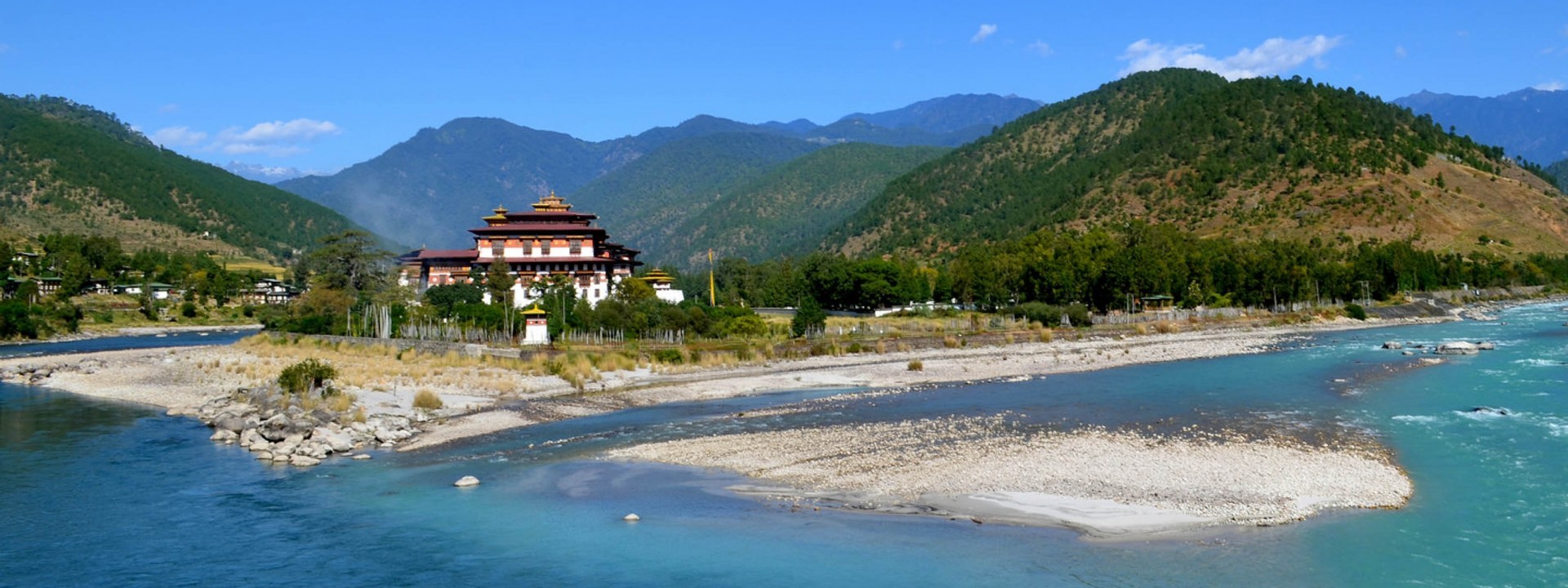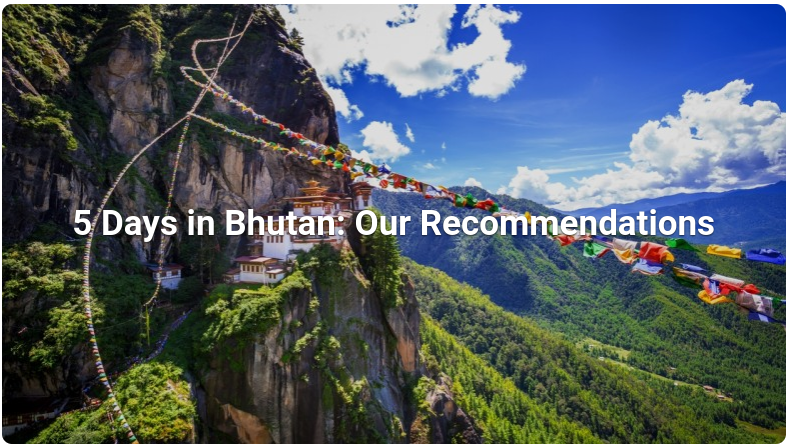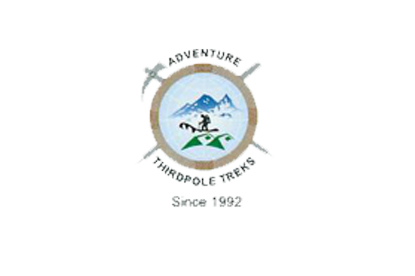6 Night 7 Day, Tour, Bhutan: Bhutan offers many models of the package programs for travel...
Bhutan, a small Himalayan kingdom located between India and China, has remained relatively isolated from the outside world until recently. But despite its small size and remote location, Bhutan has much to offer for those who are willing to explore this magical destination.
Known as the "Land of the Thunder Dragon," Bhutan is renowned for its untouched natural beauty, unique culture, and commitment to Gross National Happiness (GNH). In this article, we'll explore what makes Bhutan such a special and appealing tourism destination.
Natural Beauty
Bhutan's pristine environment boasts majestic snow-capped peaks, lush forests, and sparkling rivers. The country's national parks and wildlife sanctuaries offer visitors the opportunity to experience the rare flora and fauna that call Bhutan home. Popular trekking routes like the Jomolhari Trek and the Snowman Trek take visitors through breathtaking landscapes, including high-altitude lakes, traditional farming villages, and stunning valleys.
Culture
Bhutanese culture is deeply rooted in Buddhist traditions and values, which have shaped the country's customs, art, and architecture. Bhutan is home to many ancient monasteries, fortresses, and temples, including the iconic Paro Taktsang, or Tiger's Nest, a sacred Buddhist site perched on a cliffside. Visitors can also witness Bhutan's vibrant festivals, such as the Thimphu Tshechu, where locals come together to celebrate with dance, music, and colorful costumes.
Gross National Happiness
Unlike most countries, Bhutan measures its success not just in economic terms but also in terms of Gross National Happiness (GNH). This holistic approach to development seeks to balance economic growth with the well-being of Bhutanese citizens and the preservation of the country's cultural and natural heritage. Visitors can witness the principles of GNH in action, whether it's through Bhutan's focus on sustainable tourism or its commitment to promoting happiness and well-being among its citizens.
Traveling to Bhutan
Bhutan has a strict tourism policy that aims to preserve its natural and cultural heritage. All visitors must book their trip through a licensed Bhutanese tour operator and pay a minimum daily fee that covers accommodation, transportation, and a guide. While this can make Bhutan a more expensive destination than others in the region, it also ensures that tourism benefits the local economy and is sustainable for years to come.
In conclusion, Bhutan's natural beauty, unique culture, and commitment to Gross National Happiness make it a truly one-of-a-kind tourism destination. Whether you're a nature lover, cultural enthusiast, or simply seeking a more meaningful travel experience, Bhutan has something to offer. So why not discover the magic of Bhutan for yourself?
Tourist Activities In Bhutan
01: Bhutan Festivals Tours / soft travel:
A trip to Bhutan is like a step back in time, for a glimpse of customs and traditions that are fast disappearing from the rest of the Himalayan world. Our cultural tour of Bhutan combines the important villages and historic sites of western Bhutan, such as Paro, Thimphu, and Punakha, with a visit to the colorful annual festivals known as tsechus. Few travelers ever have the privilege of witnessing these traditional festivals, where elaborately costumed dancers perform dramas before hundreds of onlookers. Spending time with locals during these joyous celebrations is a unique privilege shared by only a few visitors each year. With optional day hikes along local paths, visits to impressive whitewashed dzongs, and immersion in Bhutanese culture, our trip into this magical kingdom is the complete cultural odyssey. Festival Tours in Bhutan are being a popular attraction to the visitors coming from the outer world.
02: Bhutan Trekking:
The power and beauty of the mountains is more impressive on foot than from any vehicle. Whether you take a two-night trek around the Bumthang valley or walk for three days from Thimphu to Paro or take the eight-day trek to the base of Mount Jhomolhari, the views, villages, people and experience will be unparalleled. Trekkers at higher altitudes are invariably greeted by breath-taking vistas. Few sites on earth can equal the first sunlight hitting a Himalayan mountain. Trekking during April and May in the Himalayas brings the deep reds and oranges of the rhododendron blossom.
03: Bhutan Pony Trek / Tour:
Pony Trekking provide a fascinating way to experience the nature and culture in Bhutan. For those who can't take the strain of daily hiking and those who want respite on long trekking , there are ponies to ease that burden.
Pony treks are becoming increasingly popular. The landscape ranging from the plains of the valley to the gently undulating hills around and the mountains beyond can take you through some of the most diverse terrain that you can see in a few days on horseback. Ponies can be hired by the hour or for longer in Bhutan. We can alternatively plan either a full-length pony trek or short treks, depending on where you want to go and how long you want to be on the saddle.
04: Day Hikes in Bhutan:
Possibilities for day hikes are enormous all over Bhutan. Whether it is a short one or two hours walk or a strenuous hike for a whole day, your journey is a discovery of small chortens, little monasteries, beautiful lakes and gorges or enchanting Bhutanese villages. The route will always reward you for your efforts
05: Rafting and Kayaking in Bhutan:
Short and easy rafting experiences for beginners or mad adventures for real freaks, you will find the right river for your desire in Bhutan. Besides one day trips Bhutanese rafting and kayaking agents also organize white water fascination in expedition style, combining several of the rivers/sections.
Best times for River Rafting and Kayaking in Bhutan is March to April and November to December. River water levels in the months May to October will be high. During these times, many of the rivers mentioned here would not be feasible. Water levels in the winter months, January to February, will be low.
06: Mountain Biking in Bhutan:
The proposed biking journey will be over 17 Km. It is suggested that journey take off at Khuruthang and stay following the feeder road until Samdingkha where footpath suspension bridge exists. From Samdingkha the new trail follows mostly along the footpath at an average gradient of 10% until Punakha Dzong where the trail connects the asphalt road. The terrain topography of the new trail is generally steep exceeding 100% in some stretches. However, the trail is an up-gradation of the footpath which the terrain topography is therefore not much of a concern.
After reaching Punakha Dzong, keep following the asphalt road along Mochhu until Khuruthang Town, a place to stretch the arms and spend a night at the cosy hotel.
07: Rock climbing in Bhutan:
Rock climbing was first introduced in Bhutan in 1998. The Nose, a climbing rock ideally situated just above Bhutans capital Thimphu, offers 13 different safely bolted climbing routes in difficulty degrees from 4B up to 7B in lengths between 12 and 27 meters. The Vertical Bhutan Climbing Club welcomes every visitor to join in. The club provides climbing equipment and training if required.
08: Bhutan Golf:
The Royal Thimphu Golf Course is a challenging nine hole (par 33 golf) course beautifully set up between Thimphus Tashichodzong and the views of spectacular mountains. The courses water hazards are man made and are strategically placed for a challenging game on the narrow fairways. A different set of tees for the back nine makes it a great double round of 18 holes. The restaurant at the golf course is said to be one of the best in Thimphu.
09: Fishing in Bhutan:
Bhutan is one of the last unexplored fishing destinations in the world. Here, you will experience the unique joy of fishing in beautiful trout streams that blend harmoniously with mountains and cultural scenes. Fishing in the crystal clear rivers set against breathtaking landscape is what every angler dreams for. About forty species have been recorded, with new species discovered every year. Fishing spots range from large rivers to crystal clear spring-fed streams. Altitudes range from a low of 1,200 m. to 3,000m. The most common varieties are the snow trout and the brown trout. The best times for fishing are in spring (March to May) and fall (September to November).


